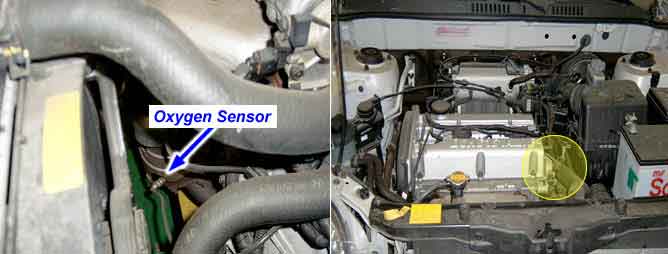

The HO2S is used to supply the ECM with information regarding the composition of the air/fuel mixture. The HO2S is positioned in the exhaust pipe ahead of the TWC. To measure the oxygen content, the HO2S requires a supply of ambient air as a reference. Since this is supplied through the wiring, the lead must not be clamped or damaged in any other way. The HO2S produces a voltage that varies between 0.1V and 0.9V under normal operating conditions. The Engine Control Module (ECM) monitors this voltage and determines if the exhaust gas is lean or rich. If the voltage input at the ECM is under approx. 0.45V the exhaust is lean, and if the voltage input is over approx. 0.45V the exhaust is rich. The ECM constantly monitors the HO2S signal during closed loop operation and compensates for a rich or lean condition by decreasing or increasing injector pulse width as necessary.
If the staying time which HO2S signal is below approx. 0.45V is longer than 30 seconds, the ECM judged as a fault and DTC is set.
Item | Detecting Condition | Possible cause |
DTC Strategy | ● O2 sensor staying time (TFB2) below or under the reference voltage to decide rich/lean is monitored. | ● Poor connection ● Intake/Exhaust system for leak ● Resistance of wire in HO2S circuit ● Open or short in HO2S heater circuit ● Defective HO2S ● Improper fuel pressure ● Defective ECM |
Enable Conditions | ● Engine coolant > 81℃(177.8℉) ● Engine speed 1750~3500rpm ● 180mmHg<Load value< 580mmHg | |
Threshold value | ● Time, TFB2 ≥ 30sec | |
Diagnosis Time | ● 30 sec continuous | |
MIL On Condition | ● 1 driving cycles |